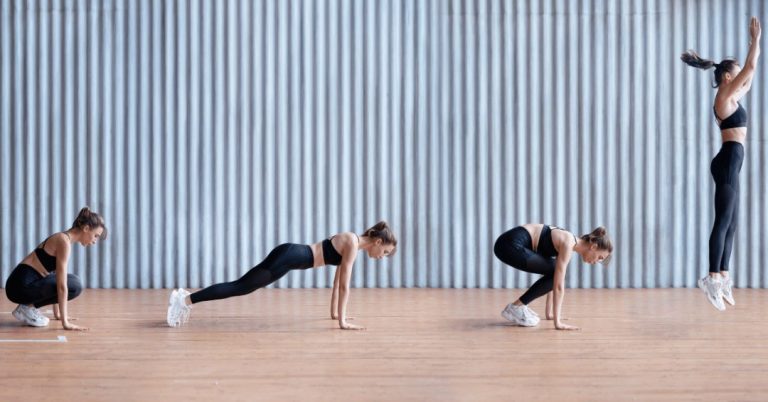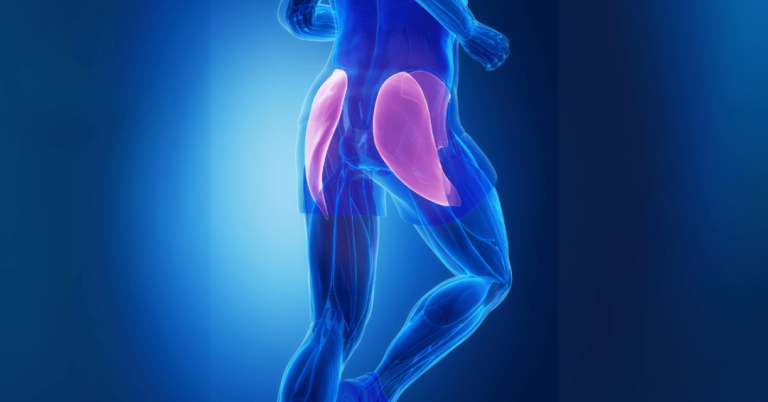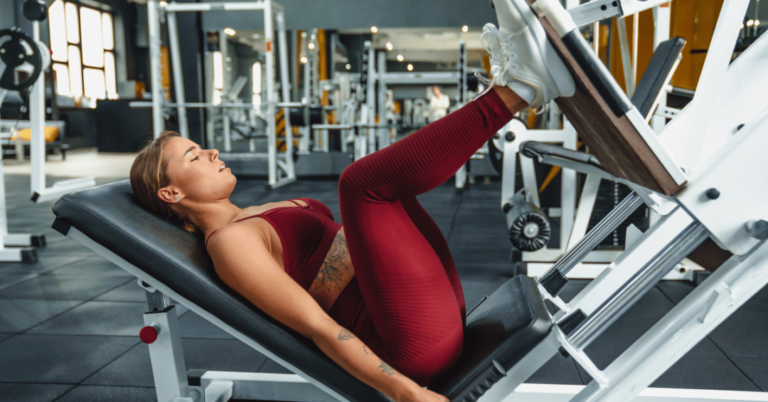How To Grow Glutes: Gym Machines To Build Your Glutes
Some links on this page are affiliate links (including Amazon Associate links) which means that, if you choose to make a purchase, we may earn a small commission at no extra cost to you. We greatly appreciate your support!
If you’re looking to enhance your lower body strength and achieve a well-defined backside, understanding how to grow glutes effectively is key. This article will guide you through the best gym machines to better target the glutes, the importance of proper muscle activation, and the optimal training frequency for glute growth. Additionally, we’ll cover the common mistakes to avoid to ensure you’re maximizing your efforts and avoiding injury. With the right knowledge and dedication, you’ll be on your way to building stronger, more powerful glutes.
What Are The Best Gym Machines To Use To Grow Your Glutes?
When it comes to building well-defined, strong glutes, utilizing the right gym machines can make a significant difference. These machines are designed to target the gluteal muscles effectively, ensuring optimal growth and development. Here are some of the best gym machines to use for growing your glutes:
1. Smith Machine
The Smith machine is excellent for performing squats and lunges, which are the best exercises to grow your glutes. The machine provides stability and support, allowing you to focus on the movement and engage your glutes thoroughly. Adjust the bar to shoulder height for squats or lower for lunges, and remember to keep your form tight to maximize glute activation.
2. Leg Press Machine
The leg press machine is another versatile tool for glute training. By adjusting your foot placement on the platform, you can shift the emphasis to your glutes. Position your feet higher on the platform and push through your heels to ensure the glutes are the primary muscles working. This machine allows you to lift weights that are heavier safely, maximizing muscle growth.
3. Cable Machine
The cable machine offers a range of exercises that can isolate and build the glutes. Exercises such as hip abductions and cable kickbacks are particularly effective. For kickbacks, attach an ankle strap to the low pulley and extend your leg backward, squeezing your glute at the top. For hip abductions, stand sideways and pull the cable across your body, engaging the side glutes.
4. Hip Thrust Machine
The barbell hip thrust machine is specifically designed to target the glutes. By allowing for a full range of motion, this machine ensures maximum glute contraction with every rep. Position yourself with your upper back on the bench, feet flat on the platform, and thrust your hips upward, focusing on squeezing your glutes at the top.
5. Glute Ham Raise Machine
The glute ham raise machine challenges your glutes and hamstrings, providing a balanced workout for the posterior chain. To use this machine, secure your feet under the pads, lower your torso until your body is parallel to the ground, and then raise yourself back up, engaging your glutes and hamstrings. This movement builds strength and size in the glutes.
6. Abductor Machine
The abductor machine specifically targets the outer glutes, which are often underworked in standard lower-body exercises. Sit on the machine, place your legs against the pads, and push outward against the resistance. This exercise isolates the gluteus medius and gluteus minimus, helping to round out your glute development.
7. Stepper Machine
The stepper machine mimics the action of climbing stairs, which is excellent for glute activation. By pushing through your heels with each step, you can effectively target and build your glutes. The continuous movement also provides a cardiovascular benefit, making it a great addition to your glute workout routine.
Summary
Incorporating these machines into your gym routine can help you achieve your glute-building goals. Remember to combine machine exercises with free-weight movements and maintain proper form to maximize your results. Consistency and progressive overload are key to growing strong, well-defined glutes.
How To Train Your Glutes Effectively During Workouts
Effectively targeting your glutes during workouts requires a combination of proper technique, consistent training, and an understanding of how to activate the muscles correctly. Here are some key strategies to ensure you are maximizing your glute gains:
Glute Muscle Activation
Proper gluteus maximus activation is crucial for ensuring that your workouts effectively target and engage your glutes. Here are some tips to help activate your glutes:
- Warm-Up Exercises: Start with glute-specific warm-up exercises such as glute bridges, clamshells, and banded lateral walks. These exercises help to activate the glute muscles and prepare them for more intense workouts.
- Mind-Muscle Connection: Focus on the mind-muscle connection during your exercises. Concentrate on squeezing your glutes at the top of the movement. Visualizing the muscles working can enhance activation and effectiveness.
- Proper Form: Maintaining proper form is essential. Ensure that your movements are controlled and that you are not compensating with other muscles, such as your lower back or hamstrings. For example, in squats and lunges, ensure that you push through your heels and keep your knees aligned with your toes.
- Use Resistance: Incorporate resistance when training glutes. Adding extra resistance helps in activating the glutes more effectively. Resistance can be used in exercises like squats, hip thrusts, and lateral walks.
Training Frequency For Glute Growth
The frequency of your workouts plays a significant role in muscle growth, including the glutes. Here are some guidelines for training frequency to maximize glute development:
- Consistency: Aim to train your glutes 2-3 times a week. Consistent training ensures that the muscles are regularly stimulated for growth without overtraining.
- Rest and Recovery: Allow for adequate rest and recovery between glute-focused workouts. Muscles need time to repair and grow, so avoid training the same muscle group on consecutive days. A good approach is to alternate between glute-focused days and other muscle groups.
- Progressive Overload: Gradually increase the weight and intensity of your exercises. Progressive overload is key to muscle growth. As your glutes become stronger, challenge them with heavier weights or more complex movements.
- Variety in Exercises: Incorporate a variety of exercises to target different parts of the glutes. Include compound movements like squats and deadlifts, as well as isolation exercises like hip thrusts and glute bridges. This variety ensures the comprehensive development of all gluteal muscles.
- Listen to Your Body: Pay attention to how your body responds to your training frequency. If you experience excessive muscle soreness or fatigue, consider adjusting the intensity or frequency of your workouts. It’s important to strike a balance between challenging your muscles and allowing them to recover.
Summary
By focusing on proper glute activation and maintaining an optimal training frequency, you can effectively target your glutes and promote muscle growth. Remember that consistency, proper technique, and listening to your body are essential components of a successful glute-building routine.
How Long Does It Take To Grow Your Butt Through Exercise?
Building a bigger, stronger butt through exercise is a goal that many fitness enthusiasts share. However, achieving noticeable glute growth requires time, patience, and a consistent approach to training and nutrition. Understanding the timeframe for muscle growth and the importance of consistency can help set realistic expectations and keep you motivated on your fitness journey.
Timeframe For Glute Muscle Growth
The timeframe for glute muscle growth varies from person to person, depending on factors such as genetics, training intensity, nutrition, and overall fitness level. Here’s a general guide to what you can expect:
- Initial Changes (4-6 Weeks): During the first month or so, you may not see significant visual changes, but you will likely notice improvements in strength and endurance. Your body is adapting to new exercises, and your glutes are beginning to activate more effectively.
- Visible Changes (3-6 Months): With consistent training and proper nutrition, most people start to see visible changes in their glute size and shape within three to six months. This period is when muscle hypertrophy (growth) becomes noticeable. Your glutes will become rounder and more defined as the muscle fibers grow and thicken.
- Significant Growth (6-12 Months and Beyond): For more substantial changes in glute size and overall muscle development, a longer-term commitment is required. After six months to a year of dedicated training, you can expect more dramatic improvements. Continued progress is possible with ongoing effort, though the rate of growth may slow down as you approach your genetic potential.
Consistency and Results In Glute Development
Consistency is crucial for achieving and maintaining glute growth. Here are some key points to ensure you stay on track and see the best results from your efforts:
- Regular Training: Stick to a consistent workout schedule that targets your glutes 2-3 times per week. Ensure you include a mix of compound movements and isolation exercises to engage all parts of the glute muscles.
- Progressive Overload: Gradually increase the resistance and intensity of your workouts. This can be achieved by adding more weight, increasing the number of sets and reps, or incorporating more challenging exercises. Progressive overload is essential for continued muscle growth.
- Proper Nutrition: Adequate protein intake is vital for muscle repair and growth. Aim to consume a balanced diet rich in grams of protein, healthy fats, and carbohydrates to support your training efforts. Staying hydrated and getting sufficient rest are also important for recovery and performance.
- Patience and Persistence: Building muscle is a slow and steady process. It’s important to remain patient and persistent, even when progress seems slow. Celebrate small victories along the way and stay focused on your long-term goals.
- Tracking Progress: Keep track of your workouts, nutrition, and progress. Taking measurements, photos, and notes can help you see improvements over time, even when they are not immediately visible.
Summary
By understanding the timeframe for glute muscle growth and the importance of consistency, you can set realistic expectations and stay motivated. Remember, the key to building a bigger butt through exercise lies in regular, focused training combined with proper nutrition and recovery. Stay committed to your routine, and over time, you’ll achieve the glute development you’re aiming for.
What Are The Common Mistakes To Avoid When Building Your Glutes?
Building strong, well-defined glutes requires not only dedication and consistency but also correct exercise techniques. Avoiding common mistakes can help you achieve your glute development goals more efficiently and prevent injuries. Here are some common pitfalls and how to avoid them:
Preventing Lower Back Pain During Glute Exercises
Lower back pain is a common issue that can arise during glute exercises, often due to improper form or overloading the lower back muscles instead of targeting the glutes. Here’s how to prevent this:
- Proper Form: Ensure you maintain proper form during all exercises. For movements like squats and deadlifts, keep your back neutral and avoid excessive arching or rounding. Engage your core to provide stability and reduce strain on your lower back.
- Hip Hinge: Master the hip hinge movement. In exercises such as deadlifts and hip thrusts, the movement should come from your hips, not your lower back. Practice the hip hinge by bending at the hips while keeping your spine straight and chest lifted.
- Weight Management: Avoid lifting weights that are too heavy, as this can cause you to compromise your form and shift the load to your lower back. Start with lighter weights and gradually increase as your strength improves.
- Warm-Up and Mobility: Incorporate a proper warm-up and mobility routine to prepare your lower back and glutes for exercise. Dynamic stretches and foam rolling can help increase flexibility and reduce the risk of injury.
- Listen to Your Body: If you feel pain in your lower back during an exercise, stop immediately and reassess your form. It’s important to differentiate between muscle fatigue and pain to prevent injuries.
Techniques To Avoid Overreliance On Hamstrings During Glute Workouts
Engaging the glutes effectively while minimizing the involvement of the hamstrings can be challenging but is essential for targeted glute development. Here’s how to avoid overreliance on your hamstrings during glute workouts:
- Isolation Exercises: Include isolation exercises that specifically target the glutes, such as glute bridges, hip thrusts, and kickbacks. These exercises minimize hamstring involvement and focus the work on the glutes.
- Mind-Muscle Connection: Focus on the mind-muscle connection by consciously squeezing your glutes at the peak of each movement. This helps ensure that the glutes actually are doing the majority of the work rather than the hamstrings.
- Foot Placement: Adjust your foot placement in compound exercises to emphasize the glutes. For example, in squats and leg presses, place your feet slightly wider and point your toes outwards to increase glute activation.
- Tempo and Control: Slow down the tempo of your exercises to maintain control and ensure proper muscle engagement. This is particularly important in exercises like deadlifts and squats, where the hamstrings can easily take over if the movement is too fast.
- Use Resistance Bands: Incorporate resistance bands around your thighs during exercises like squats and hip thrusts. Bands help activate the glute muscles more effectively and reduce the engagement of the hamstrings.
Summary
By being aware of these common mistakes and implementing the suggested techniques, you can enhance your glute workouts and achieve better results. Preventing lower back pain and avoiding overreliance on the hamstrings will help you target your glutes more effectively, leading to stronger, well-defined muscles and a lower risk of injury.
Conclusion
Building stronger glutes requires a combination of effective exercises, proper technique, and consistent effort. By incorporating the best gym machines designed to target the glutes, focusing on proper muscle activation, and maintaining an optimal training frequency, you can make significant strides in training the glutes. Understanding the timeframe for muscle growth and the importance of consistency will help you set realistic expectations and stay motivated over the long term.
Avoiding common mistakes, such as preventing lower back pain and minimizing overreliance on the hamstrings, is crucial for maximizing results and preventing injuries. By prioritizing proper form, focusing on the mind-muscle connection, and performing exercises, you can ensure that your glutes are effectively targeted and engaged.
Remember, achieving bigger glutes takes time, patience, and dedication. Stay committed to your workout routine, maintain proper nutrition, and listen to your body to ensure optimal progress. With the right approach, you’ll be well on your way to building the strong, shapely glutes you desire.





